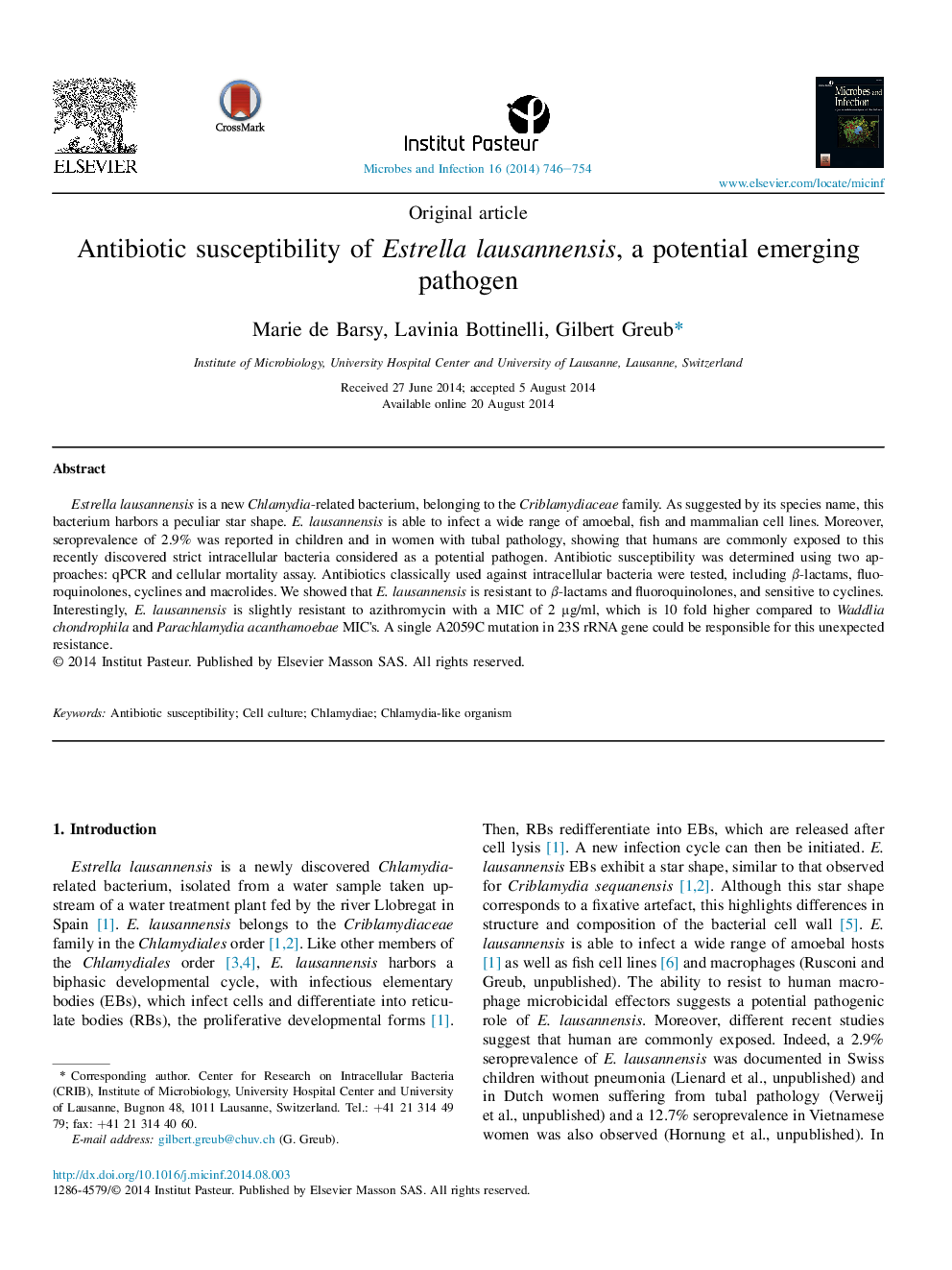| کد مقاله | کد نشریه | سال انتشار | مقاله انگلیسی | نسخه تمام متن |
|---|---|---|---|---|
| 3414721 | 1224886 | 2014 | 9 صفحه PDF | دانلود رایگان |

Estrella lausannensis is a new Chlamydia-related bacterium, belonging to the Criblamydiaceae family. As suggested by its species name, this bacterium harbors a peculiar star shape. E. lausannensis is able to infect a wide range of amoebal, fish and mammalian cell lines. Moreover, seroprevalence of 2.9% was reported in children and in women with tubal pathology, showing that humans are commonly exposed to this recently discovered strict intracellular bacteria considered as a potential pathogen. Antibiotic susceptibility was determined using two approaches: qPCR and cellular mortality assay. Antibiotics classically used against intracellular bacteria were tested, including β-lactams, fluoroquinolones, cyclines and macrolides. We showed that E. lausannensis is resistant to β-lactams and fluoroquinolones, and sensitive to cyclines. Interestingly, E. lausannensis is slightly resistant to azithromycin with a MIC of 2 μg/ml, which is 10 fold higher compared to Waddlia chondrophila and Parachlamydia acanthamoebae MIC's. A single A2059C mutation in 23S rRNA gene could be responsible for this unexpected resistance.
Journal: Microbes and Infection - Volume 16, Issue 9, September 2014, Pages 746–754